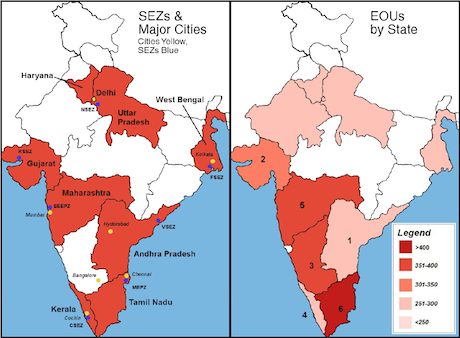DPU Working Paper - No. 145
Special Economic Zones & Development: Geography and Linkages in the Indian EOU Scheme

13 August 2012
Author: Andrew Cheesman
Publication Date: August 2012
ISSN 1474-3280
During the past five decades, free trade zones have become an increasingly important element of world trade. As a result, a somewhat standard zone model has developed, based loosely on the much-lauded 1970's Chinese zones. Used properly, this model can be effective at generating change within a handful of basic economic parameters (the opening and development of new markets, exports-generation, attraction of FDI, experimentation with liberalization, etc.). But this model, also frequently implemented with some vague developmental objective, is often ill-designed to contribute to domestic processes of economic change in host countries.
Taking a distinctly developmental perspective on zones' usefulness, this paper analyzes the extent to and mechanisms by which India's Export-Oriented Unit (EOU) scheme (a policy platform supporting geographically-dispersed, opt-in, domestically linked export enclaves) has contributed to structural transformation in recent decades. The paper will assess state-wide EOU distributions based on three characteristics – urbanization, geographical dispersion, and sectoral identity – in order to draw relationships between the geography of international trade and economic development.
The paper finds that EOUs have contributed more to processes of domestic structural change than have India's more traditional SEZs, via three processes: technological and skills spillovers, economic linkages, and the disaggregation of semi-tax-exempt enterprise. It also finds, based on empirical analysis guided by the three parameters outlined above, that the optimal distribution of EOUs will be “somewhat urbanized, somewhat dispersed, and sectorally reflective of the domestic economy.” The paper concludes with policy recommendations intended to expand the canonical zone model by incorporating some key EOU characteristics, in hopes of better-tailoring this broad model to a more positive developmental effect.
 Close
Close

